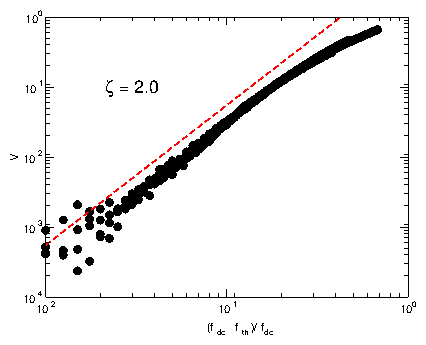 Figure 1:
(a) The velocity V vs dc driving force fdc for (from
right to left) T/Tth = 0.0, 0.24, 0.61 and 0.95,
where Tth is the
temperature at which the threshold disappears, fth=0.
(b) The same curves collapsed
by applying a linear shift of the x-axis, fshift(T).
Figure 1:
(a) The velocity V vs dc driving force fdc for (from
right to left) T/Tth = 0.0, 0.24, 0.61 and 0.95,
where Tth is the
temperature at which the threshold disappears, fth=0.
(b) The same curves collapsed
by applying a linear shift of the x-axis, fshift(T).
|


